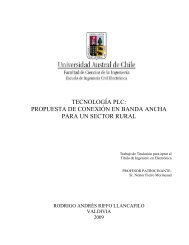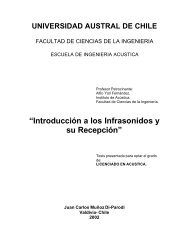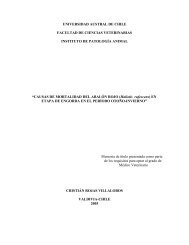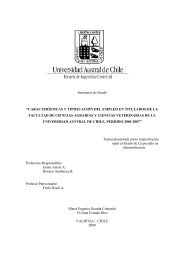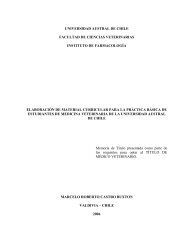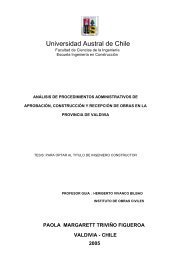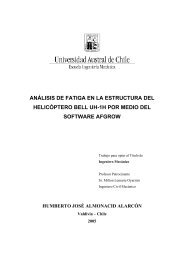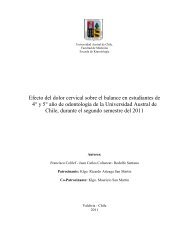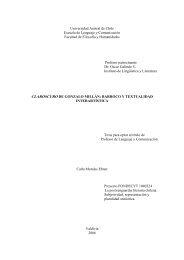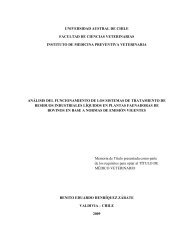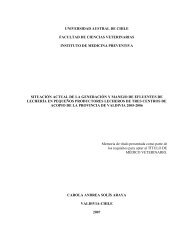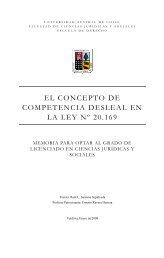Diversidad y control biológico de insectos - CyberTesis UACh ...
Diversidad y control biológico de insectos - CyberTesis UACh ...
Diversidad y control biológico de insectos - CyberTesis UACh ...
Create successful ePaper yourself
Turn your PDF publications into a flip-book with our unique Google optimized e-Paper software.
1994; Nowak et al., 2001; Tillman and Mulrooney, 2000; van <strong>de</strong>n Berg et al., 1998), as<br />
well as other organisms like fish and non-target herbivores. These studies reported transient<br />
<strong>de</strong>creases in non-target numbers, specifically predators and parasitoids, immediately after<br />
λ-cyhalothrin treatment, but numbers recovered within a short period (usually 10-15 days).<br />
Our results suggest more long-term effects because the adverse effects of the insectici<strong>de</strong><br />
were present for at least 40 days after treatment <strong>de</strong>spite of the absence of barriers to<br />
movement and the fact that plots were surroun<strong>de</strong>d by untreated grassland providing large<br />
sources of migrants. On the other hand, we consi<strong>de</strong>r that <strong>de</strong>velopment stage of the<br />
invertebrates could explain, at least partially, these results: in the winter experiment, many<br />
individuals were immature and would have lower mobility than adults, therefore the<br />
recovery time in this season may be longer than in the spring or summer, seasons in which<br />
the most of the mentioned studies were conducted.<br />
The insectici<strong>de</strong> affected all community metrics in winter, while it affected diversity,<br />
evenness and dominance but not species richness in spring. The latter result must be<br />
interpreted cautiously, because the period between spraying and sampling in the spring<br />
experiment could have been long enough to allow migrants move from surroun<strong>de</strong>d area to<br />
plots. Therefore, a negative impact of insectici<strong>de</strong> in the spring species richness could be<br />
masked by movement of these migrants.<br />
In relation to new emerging technologies, for example narrow spectrum insectici<strong>de</strong>s, B.<br />
bassiana based biopestici<strong>de</strong>s could play an important role because Chilean daily and beef<br />
industry can not compete with the rest of South America. Instead, it is focused in high-<br />
profit market niches such as organic or naturally raised cattle, where these new pestici<strong>de</strong>s<br />
would not be allowed, in spite of they have better properties than the broad-spectrum<br />
insectici<strong>de</strong>s currently used. In addition, if an IPM program is implemented for D. pallens<br />
<strong>control</strong>, many alternatives will be nee<strong>de</strong>d to <strong>de</strong>sign an robust and sustainable program.<br />
Linking between biodiversity and ecosystem functioning is accumulating support, but the<br />
issue remains unresolved (Ehrlich and Wilson, 1991). This relationship has been<br />
hypothesized to be linear (the rivet hypothesis, Ehrlich and Ehrlich, 1981), asymptotic (the<br />
redundancy hypothesis; Walker, 1992) or idiosyncratic (Lawton, 1994). Despite of these<br />
different theories, it can be argued that some level of biological diversity is necessary to<br />
maintain ecological function and resilience (Spratt 1997) but unfortunately, incomplete<br />
113



